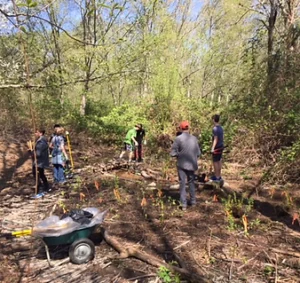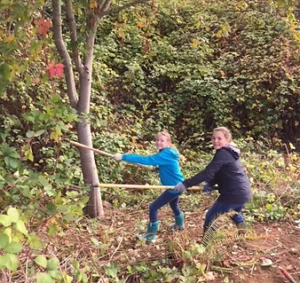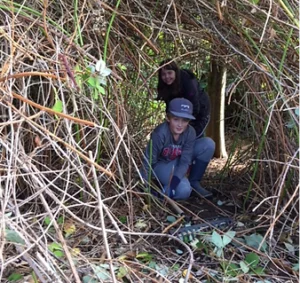Sarah Bergmann's Vision
The original pollinator pathway was conceived by Sarah Bergmann in 2007, and is located near Seattle University. Her vision called for plantings in front yards and along strips of land between the sidewalk and the street, creating a pathway of continuous gardens.
The pollinator pathway idea has now become a global movement. The current approach is to plant continuous corridors of native pesticide-free plantings that are friendly to pollinators. Connecting our yards, parks, orchards and trails creates a continuous pathway for pollinators.
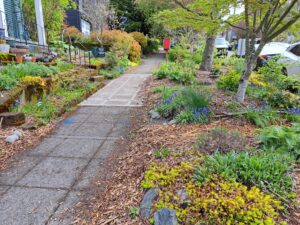
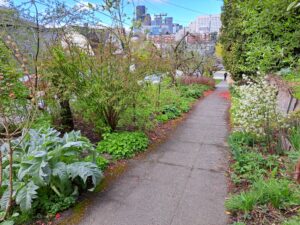
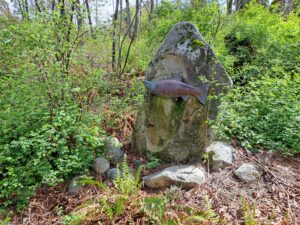
Yard by Yard Project
Here is an exciting idea: Replace your lawn with native plants that will help conserve water and create healthy pollinator habitat. Pollinator Pathway NW and the Finn Hill Neighborhood Alliance received a grant to test this grassroots solution to preserving local watershed.
If you are a Finn Hill resident and want to take part in this project, check out the details or contact lynne@finnhill.org
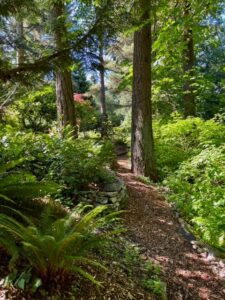
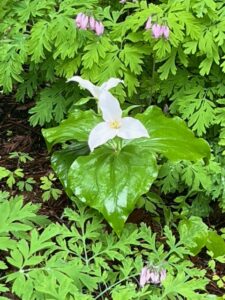
Jeanne's Pollinator Garden
My daughter studied Permaculture in college and I became fascinated with having a Food Forest. I could feed my family, wildlife and pollinators. Seemed so easy. But, of course, it’s a work in progress. I have spent the last 5 years planting perennials for pollinators, fruiting bushes and trees, rhubarb, grapes and raspberries. Did you know they spread? Alas, so do the buttercups and other annoying weeds. But it’s job security and an exercise program. The hummingbirds love the crocosmia and the bees flit merrily from bloom to bloom on the oregano. I am trying to fill the seasons with habitat and sustenance.
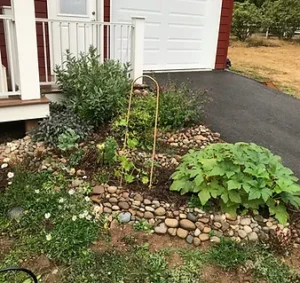
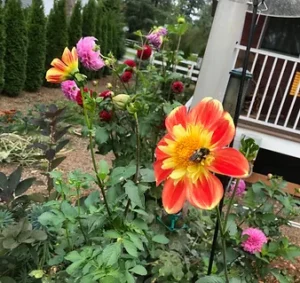
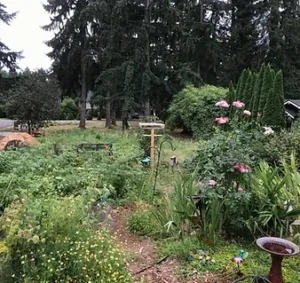
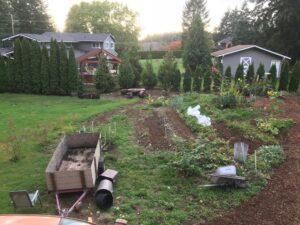
Streetside Heritage Garden
This garden demonstrates the beauty of shrub steppe native plants and low-carbon, local materials through a simple design that balances ease of movement with ample planting space. The garden is divided into four beds based on soil type – Standard, Sandy, Lithosol, and Sunken (water-needier plants), showcasing the diversity of shrub steppe habitat and ensuring plants are in conditions that support their thriving. Learn more about shrubbe steppe habitats.
The garden took great inspiration from Brad Lancaster’s work, but adapted it to the native ecology of Eastern Washington’s shrub steppe. The garden features local basalt stone sourced from roadsides and a dairy a few miles out of town and urbanite (reused broken concrete) salvaged from a sidewalk on the same property and other sites. More information and other projects by the garden’s designer can be found at woollypoddesign.com.
Street Address: 1118 Playfield Ave., Prosser WA, 99350
The garden took great inspiration from Brad Lancaster’s work, but adapted it to the native ecology of Eastern Washington’s shrub steppe. The garden features local basalt stone sourced from roadsides and a dairy a few miles out of town and urbanite (reused broken concrete) salvaged from a sidewalk on the same property and other sites. More information and other projects by the garden’s designer can be found at woollypoddesign.com.
Street Address: 1118 Playfield Ave., Prosser WA, 99350
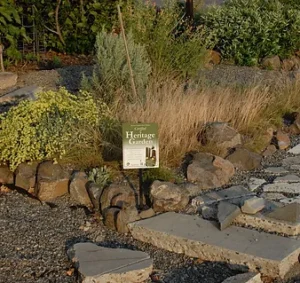
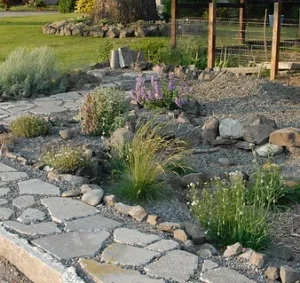
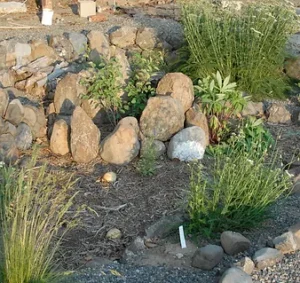
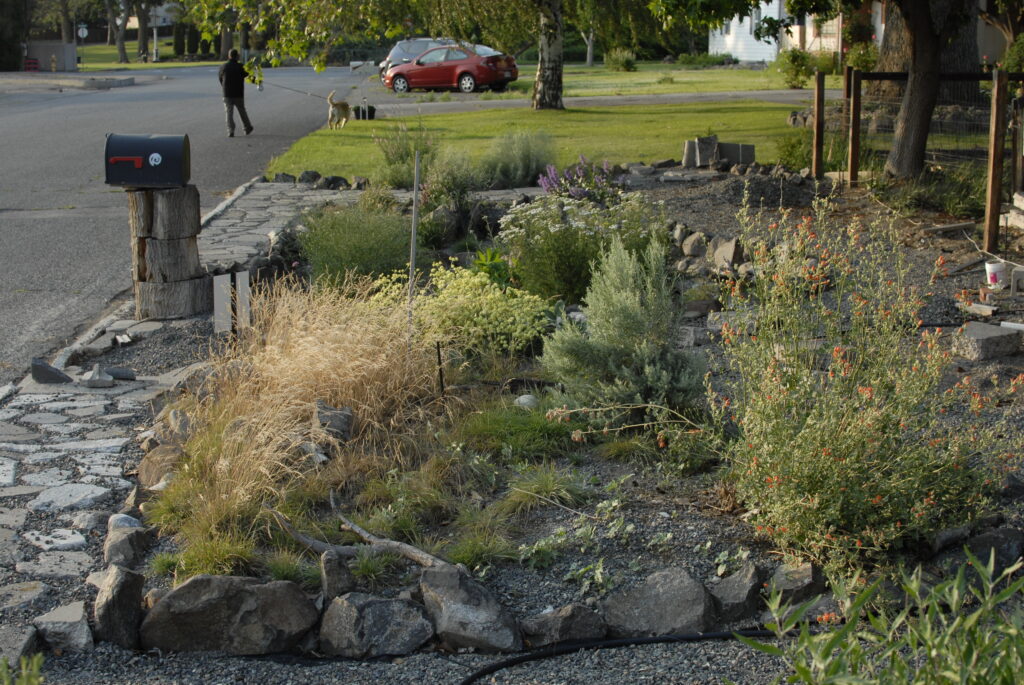
Valley View Habitat Club
Habitat restoration has had a rich tradition at Valley View Middle School for over 20 years. During this time, large areas of Himalayan Blackberries have been removed and replaced with a variety of native trees, shrubs and ground covers. As part of this process, students learn about the importance of high biodiversity in a healthy, balanced ecosystem. We are thrilled to be part of the NW pollinator pathway as a means to improve habitat for local wildlife.
Valley View Middle School, Snohomish, WA 98296
